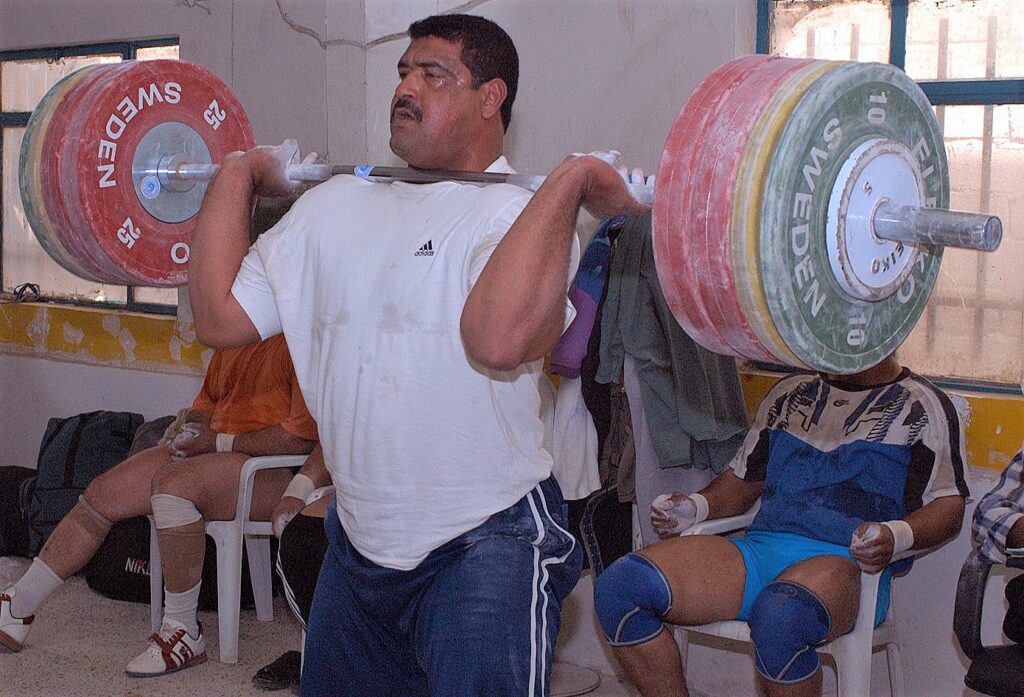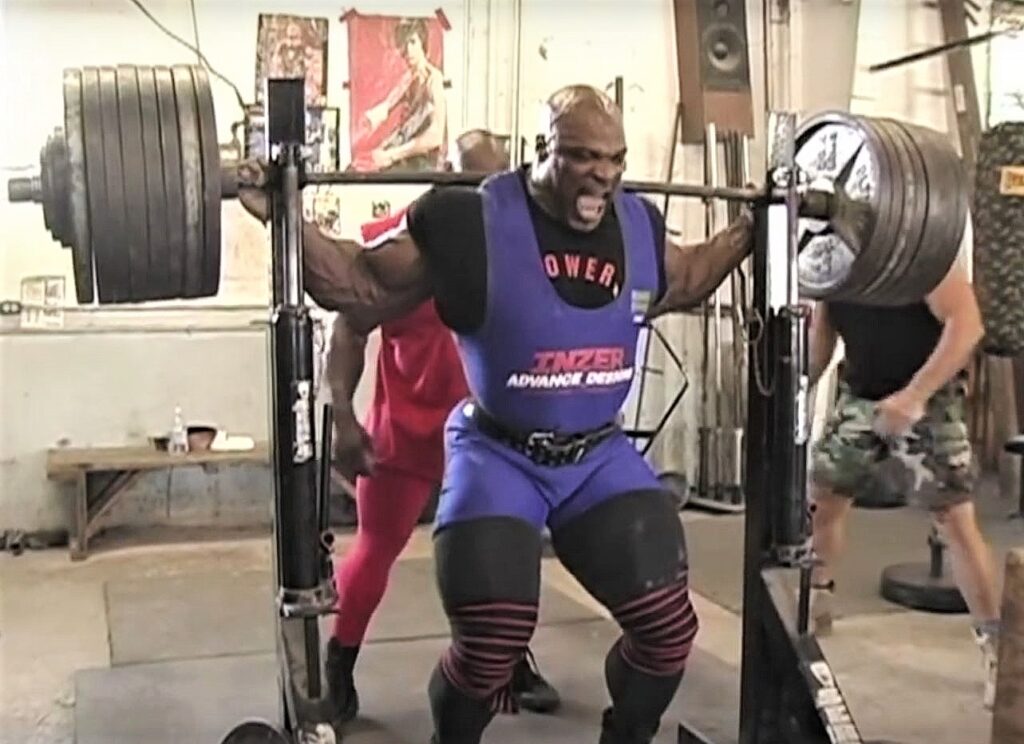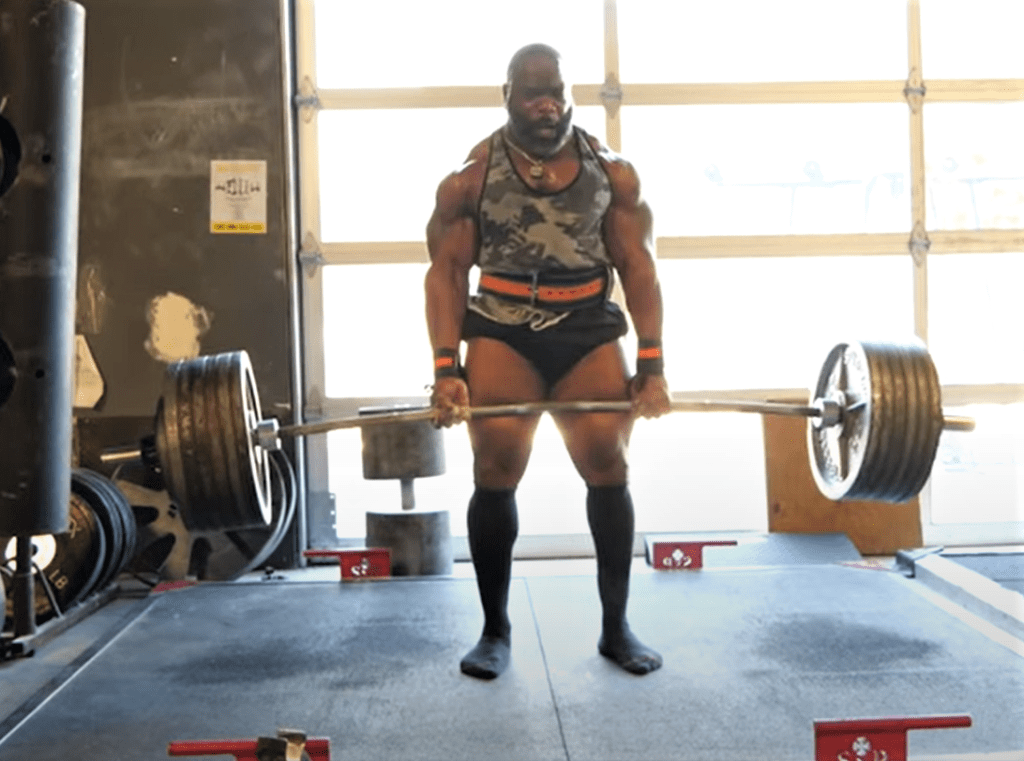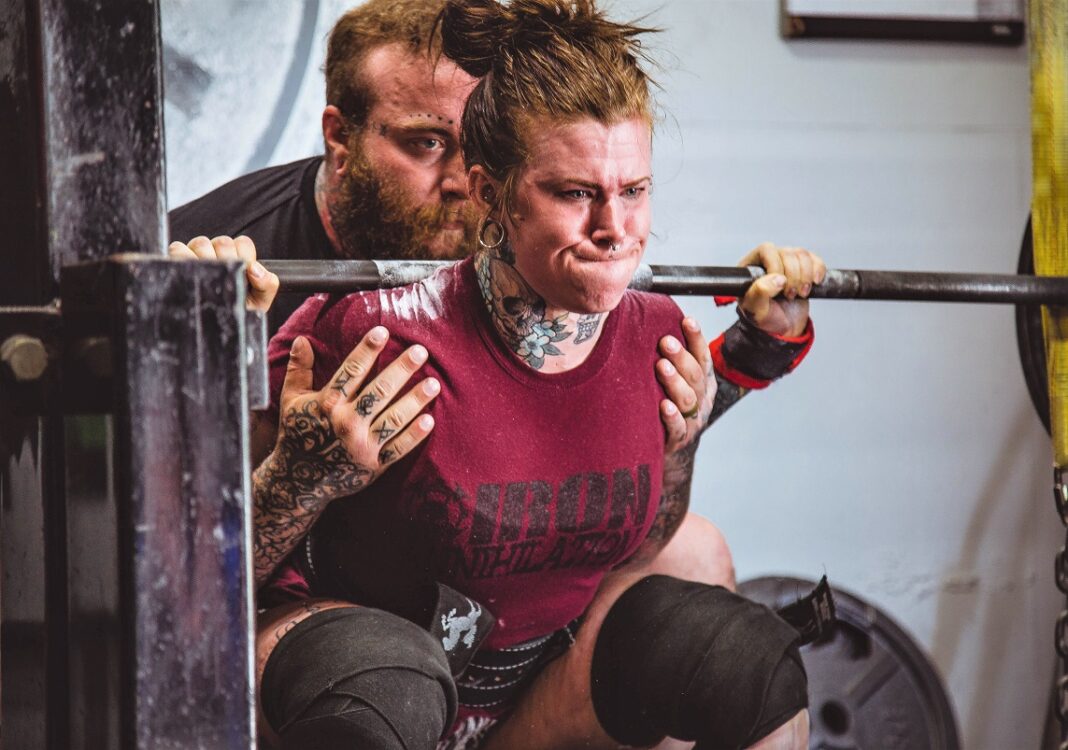Credit: Alora Griffiths
The singles scene. Are one-rep “sets” a good way to gain strength? Are they a productive way to boost muscle growth? Is there a safe and effective way to include single reps in your workouts? The Barbell investigates the singles scene.
SINGLE REP TRAINING FOR STRENGTH
Maximum singles are a destination. A powerlifter or Olympic weightlifter performs single reps multiple times in competitions. But they can also be part of the journey? Let’s look at four productive ways to incorporate singles in your strength training, whether or not you’re a competitive lifter.
PYRAMID BUILDING
You can simply pyramid up to your one-rep max with a progression something like this, using increasingly heavier weights: 12 reps, 8 reps, 5 reps, 3 reps, 1 rep. This is not typically a long-range strategy, but it is safe way of gauging your one-rep max.

DINOSAUR TRAINING PROGRESSION
Dinosaur Training is a system that advocates returning to old-time strongman techniques. This is a Dinosaur single rep progression:
Workout 1: Pyramid up to one heavy, non-max single.
Workout 2: Pyramid up to two singles with the workout 1 weight.
Workout 3: Pyramid up to three singles with the workout 1 weight.
Workout 4: Pyramid up to four singles with the workout 1 weight.
Workout 5: Pyramid up to five singles with the workout 1 weight.
Then add 5-10 pounds to the weight and begin again with workout 1, repeating the process.
You can also do this same progression but repeating each workout twice, so it takes 10 weeks to go through the workout progression.
DENSITY TRAINING
Density Training is a system for performing heavy but non-max single reps within a specific amount of time. Progressively, over subsequent workouts, you either increase the number of singles in that time frame or perform the same number of singles but decrease the amount of time. So, for example, you might start with three singles in 12 minutes (six minutes rest before reps two and three) and add one single each workout until you get to seven reps in 12 minutes (two minutes rest before reps two to seven). Or start with three singles in 12 minutes and progress to three singles in four minutes (again progressing from six minutes rest to two minutes rest). Density training is all about packing in the heavy work with progressively less rest.
REST-PAUSE
Rest/Pause is simply a way of resting shortly between each rep to regain some of your strength. So, choose a weight that is approximately 85-90% of your one-rep max. Perform one rep, rerack or set down the weight but hold on, rest 10-30 seconds, then do another rep. Increase rest times when necessary to perform 4-6 such rest-pause singles.
SINGLE REP TRAINING FOR SIZE
The reason why many bodybuilders do single reps in the powerlifts (squat, deadlift, bench press) is simple. Most of us took up bodybuilding to be both big and strong, and the lower the reps the greater the weights we can use. The powerlifts are the main barometers of strength, and they’re typically the free-weight exercises in which you can use the most weight. Of course, bodybuilding is very different from powerlifting. Bodybuilding is all about the appearance of your physique, and how much you can lift has no direct bearing on that. Still, even competitive bodybuilders spend much more time in gyms than they do on stages, many bodybuilders train alongside powerlifters, and for a significant number of non-competitors how much they can lift is at least as important as how they look. Thus, many strain through one-rep powerlifts.
But do single reps work to build muscle?
SINGLE REP TRAINING: BODYBUILDER OPINIONS
Let’s get the opinions of three legendary pro bodybuilders.
RONNIE COLEMAN
8-time Mr. Olympia Ronnie Coleman was known for his heavy lifting (see: How Strong Was Ronnie Coleman?). Coleman told us this:
“I’ve done one-rep sets before. I used to do powerlifting competitions. And I’ve done 800-pound deadlifts and squats for a couple reps each. But that’s not what built my body. I trained heavy all the time, but I’d go for 10 reps per set. People think because I use so much weight that I’m for low-rep training, but what built my body was sets of 10 to 12 reps.”

JAY CUTLER
Coleman’s rival, 4-time Mr. Olympia Jay Cutler, told us:
“I did some singles when I was a teenager, just to see how much I could bench or something, but I don’t suggest it to anyone. If you want to be a bodybuilder, train like a bodybuilder, and that means sets in the 8-to-12 rep range. I don’t really see an advantage to doing fewer than eight reps, unless all you want to do is build strength. For muscle gains, keep your reps in the mid-range.”
JOHNNIE JACKSON
And Johnnie Jackson was both a pro bodybuilder and a competitive powerlifter. Jackson told us:
“Because I’m not just a bodybuilder, I’m also a powerlifter, I do singles just before a powerlifting meet. For powerlifting training, you don’t do singles most of the time—you’ll do things like sets of five or sets of three—but the closer you get to a meet, the lower the reps get. I was training for a powerlifting meet, and I was doing over 800 in the squat and deadlift before I strained my quad. I definitely think you can use low-rep training for bodybuilding, but you probably shouldn’t do fewer than five reps per set most of the time. Sometimes, though, you just want to test yourself. For me, that’s an important part of training.”

SINGLE REP TRAINING: THE SCIENCE
The ideal range for building muscle is 6-12 reps per set. It’s sometimes effective to go lower or higher, but not extremely low or extremely high. Routinely do very high reps and science has proven your body will shut down muscle growth. Conversely, if you routinely do very low reps you’ll never stimulate much growth.
Exercise scientist Jim Stoppani, PhD, explains: “Although using a heavy enough weight to complete just one rep provides the most overload on a muscle, it doesn’t result in the most growth or strength gains. Overload is important for both muscle growth and strength, but other factors also play a key role. To build muscle, you need to perform multiple reps with a given weight. Research shows that the best rep range for building muscle is about 6-12 reps per set. The reason that multiple reps lead to greater muscle growth as compared to single reps has to do with biochemical events within the muscle.
“Doing multiple reps literally changes the chemistry of the muscle cells. One effect this has is to draw water into the muscle cells. This is known as the muscle pump, and it’s important for stimulating growth because it stretches the muscle cell membrane, which results in a signal to grow larger. Multiple reps also lead to greater levels of lactic acid in muscle, and this chemical byproduct of exercise signals growth hormone to be released, which influences muscle growth and strength gains. One-rep sets are a great way to test your true strength but a poor way to train.”
ONE-REP CALCULATOR
If you want to know how much you can lift for a single rep, there are online calculators, like this one where you can type in the number of reps you did in an exercise and the weight you used, and the calculator computes your one-rep max. You can also multiply your weight used for 10 reps by 1.33. For example, if you can bench press 225 for 10 reps, 225 x 1.33 = 299.25. In this case, you can legitimately call yourself a 300-pound bencher (rounding up, for good measure) without ever actually sliding more than two plates per side on the bar.
TESTING YOUR STRENGTH
First, a safety warning. You’re more likely to injure yourself doing a maximum single rep than by doing an 8-to-12 rep set to failure. Not only does the greater weight increase the odds of injury, but, whereas in an eight-rep set you have seven reps to access your strength, set your technique, and develop a rhythm, with a single rep your first rep is your last rep. Fail in the squat or bench press and—until the weight is racked again—your spotters become the most important people in your life.
If you still want to test your strength with single reps, do so only occasionally and only in the deadlift, squat, power clean, or bench press. Pyramid your sets with at least three progressively heavier, lower rep sets before your max single. The heavier you lift the more crucial your equipment and spotters become, so make certain at least one experienced spotter (more, if you lift especially heavy) is right next to you for any max squat or bench press. Good luck and great strength!
















































